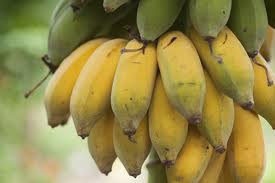Ghana and Uganda are making progress towards the quick adoption of genetically-modified (GM) crops as a means of fighting poverty and ensuring food security among people.
While Uganda is neck-deep into researching on the viability of a good number of crops, Ghana can be said to be making a remarkable headway too.
This can be evidenced by the recent clearance at the ports of the seeds of some three genetically-modified crops – cowpea, rice and cotton – by Ghana’s National Bio-safety Committee. And these have been given to some research institutions for field trials. The two countries have not yet passed their Bio-safety Laws.
Banana
Recently, Ghana and the EU signed an agreement that will see the former receive 7.2 million Euros from the European Union to help with the production and export of bananas.
According to Finance Minister Seth Terkper, who signed the financing agreement on behalf of the government, the money will be used for the Banana Accompanying Measures Project (BAM). Research by Ugandan scientists on bananas enriched with vitamin A and iron is beginning to show promising signs.
The ongoing experiment known as bio-fortification at the Kawanda-based National Agricultural Research Laboratories (NARL) is the first of its kind in a developing country.
Dr. Geoffrey Arinaitwe, a member of the research team, explained to some four Ghanaian journalists who were sponsored by Biosciences for Farming in Africa (B4FA) to Kampala recently that the exciting development first appeared in late 2010 when the bananas were planted in a confined field trial at NARL, which is part of the National Agricultural Research Organisation (NARO).
The Vitamin A genes inserted in apple and nakinyika bananas were extracted from maize and asupina – an Asian banana cultivar – while the iron-promoting genes were got from soya beans.
Dr. Andrew Kiggundu, head of the National Agro-Biotechnology Centre (NABC) who took the journalists on a tour of some banana farms under confined trials, said the ongoing biotechnology-based research had prioritized saving staple crops from virulent pests such as weevils, nematodes and diseases like banana bacterial wilt (BBW, and fungal black ‘sigatoka’, also in bananas, cassava mosaic and cassava brown streak disease (CBSD) in cassava; and the sweet potatoes virus disease.
“In Uganda, for example, 10 million tonnes of bananas are produced each year, but up to 40 per cent rots and goes to waste. It is for this reason that we’re determined to provide resistant lines against these serious constraints using biotechnology. But unless the draft bill is passed into law, technology from this useful research cannot get to would-be beneficiaries,” Dr Kiggundu noted.
The journalists also toured the NABC laboratory, the Bio-safety Level II greenhouses and the confined field trials (CFT) site for genetically-modified bananas: sukali ndizi (apple banana) which is a dessert and nakyinyika (a cooking banana) – both bearing Vitamin A and Iron micronutrients, which are already expressing signs of integration of the two micronutrients.
Are the bananas edible?
Dr Kiggundu indicated: “We’ve asked government for permission to eat the first GM bananas from here, before anybody else eats them. We want to demonstrate to the world, the high level of confidence we have in the food from crops we have genetically-modified here, that it is as safe as any other banana.”
Ghana’s story
From a paltry 5,000 tonnes in 2005, Ghana now exports 65,000 metric tonnes of banana annually. Ghana exported 62,000 tonnes of bananas to the Eurozone last year.
Ghana’s exotic banana production industry directly employs 2,400 workers and indirectly benefits 40,000 people in the Volta Region alone. Bananas are the most exported fruits in terms of volume and they rank second after citrus fruit in terms of value.
In 2010, Ghana exported 52,000 tonnes of banana to mostly European countries, representing just one percent of the total export from around the world. According to the Food and Agriculture Organization (FAO) statistics, total export of bananas accounted for 15 million tonnes in 2010 valued at over US$7 billion.
The European banana market is the largest in the world, with about 5.5 million tonnes imported per year.
Since 2006 when the European Union (EU) opened its market, there has been a rise in exports of between 2 and 5 percent annually from Ghana and the Cavendish variety, the most preferred, is cultivated by both small holder farmers and large companies.
Business News of Monday, 9 September 2013
Source: Daily Guide
Ghana, Uganda research into GM crops













